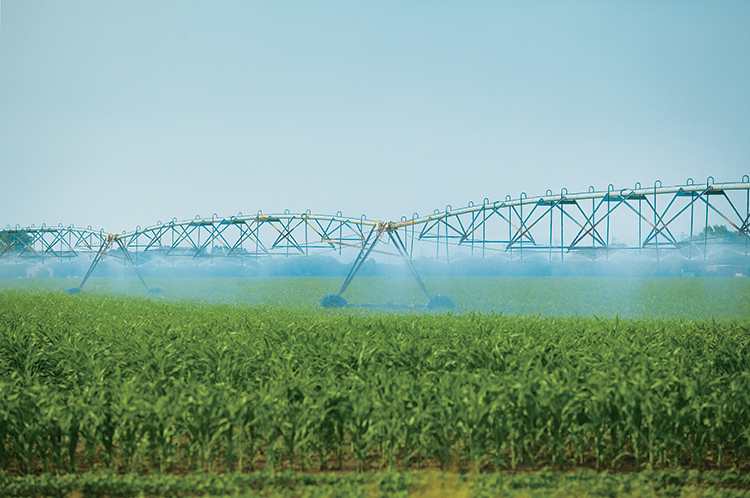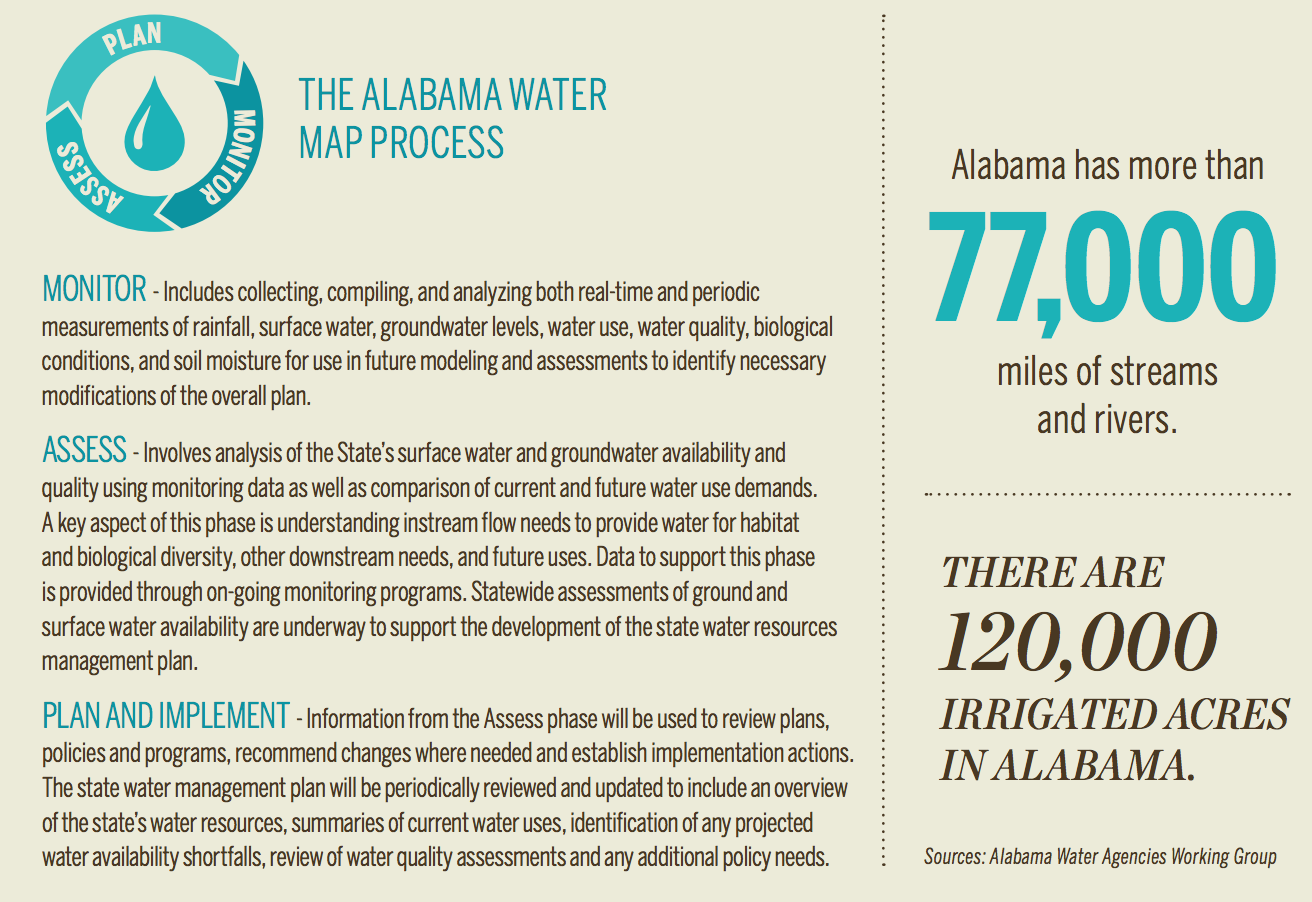Home > Alabama > Alabama Environment > Water, Water Everywhere
Water, Water Everywhere

In a recent study on the relationship between water and corn growth, conducted by Auburn University, the findings were not necessarily surprising. Results confirmed the age-old knowledge that corn grows better when an ample amount of water is applied at the appropriate time.
But when it came to the difference between corn growth with and without limited water, the findings were nothing short of remarkable.
“It was amazing,” says Sam Fowler, director of Auburn University’s Water Resources Center and Alabama Irrigation Initiative collaborator.
“Where water was a limiting factor, the yields averaged just over 50 bushels per acre. And when water was removed from being a limiting factor – when water was added at a critical time – the yield went up to 205 bushels per acre. The only difference in those two circumstances was water alone. Everything else was the same.
“That shows the phenomenal response that corn has to water.”
Water Work
As this study might indicate, water has become something of a hot topic as it relates to agriculture. The Alabama Department of Agriculture and Industries is one of five agencies that make up a task force known as the Alabama Water Agencies Working Group, which was formed in 2012 to recommend a comprehensive water management plan.
“They identified about 11 different critical issue areas related to water use in Alabama,” Fowler says of the task force.

Irrigation Increases
The primary issue related to agriculture is irrigation.
“The biggest issue we’ve been looking at over the past decade is increasing irrigation for agricultural use, and whether that can be done in a way that’s both sustainable and environmentally friendly,” Fowler says.
“Right now, we have about 120,000 irrigated acres in Alabama. That’s increased over the last couple of years. It looks to me like irrigation is going to continue to increase over the next few years. It wouldn’t surprise me at all if irrigation in 10 years isn’t at least twice what it is now.”
Even at that pace, Alabama would still lag behind Mississippi and Georgia in irrigated farmland. The two neighboring states have much larger areas with shallow ground water, whereas Alabama’s aquifers are deeper and more expensive to tap.
Right to H2O
Irrigation in Alabama is relatively light, as state law restricts landowners’ access to water to include only the water that is either under or adjacent to their land, a mandate also known as the common-law riparian doctrine.
“We are looking to get the state legislature to soften the riparian rights regulation to allow the movement of some water that may not have riparian rights,” Fowler says. “We want to make sure that’s done in a regulated way to ensure that it’s sustainable.”
Alabama’s agricultural water usage is only around 10 percent of the state’s overall water usage, Fowler says, which is much less than Western states, where agricultural water withdrawal is typically more than half of the state’s total.
“You just cannot row-crop in states west of the Mississippi River unless you irrigate,” he says.
And though Alabama wouldn’t require the level of irrigation used in, say, California, Fowler says an increase would help the bottom line.
“Even though we get a lot of rainfall annually, the timing of water is very, very important,” he says. “Having water applied at the right time (through irrigation) makes a tremendous difference. That can have a significant economic impact for agriculture and the rural economy.”



